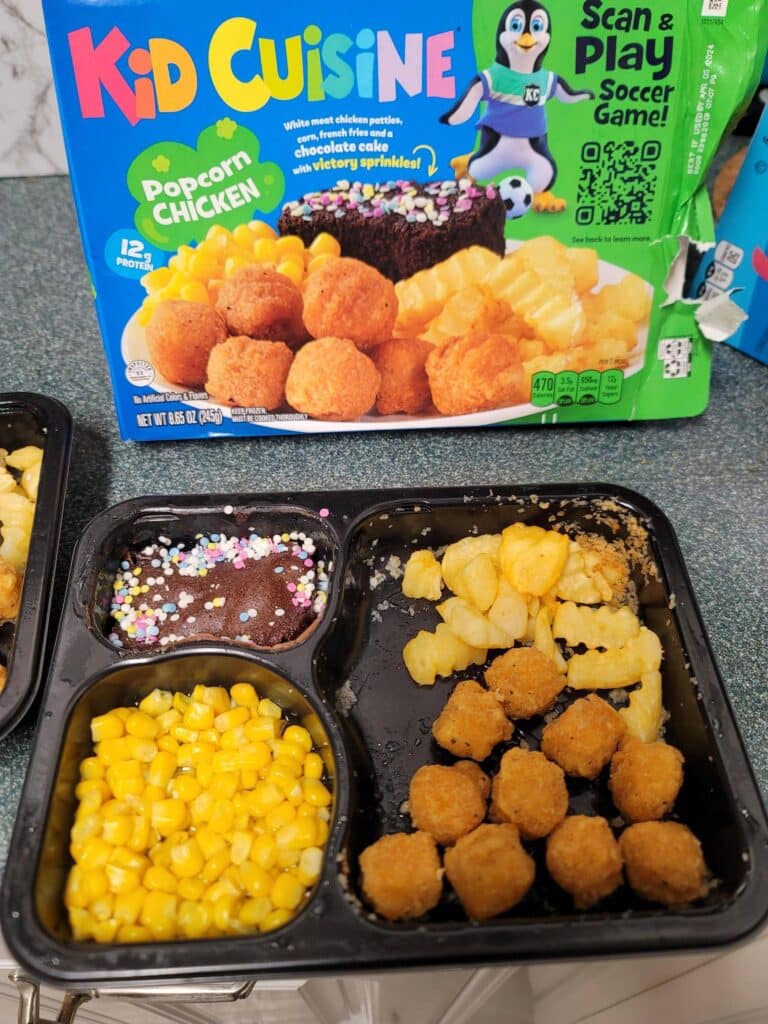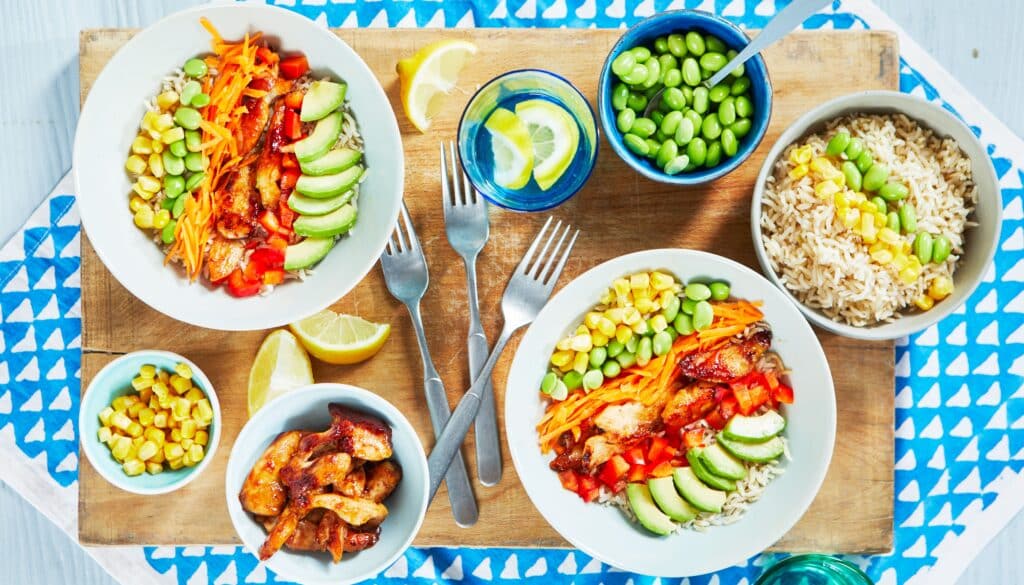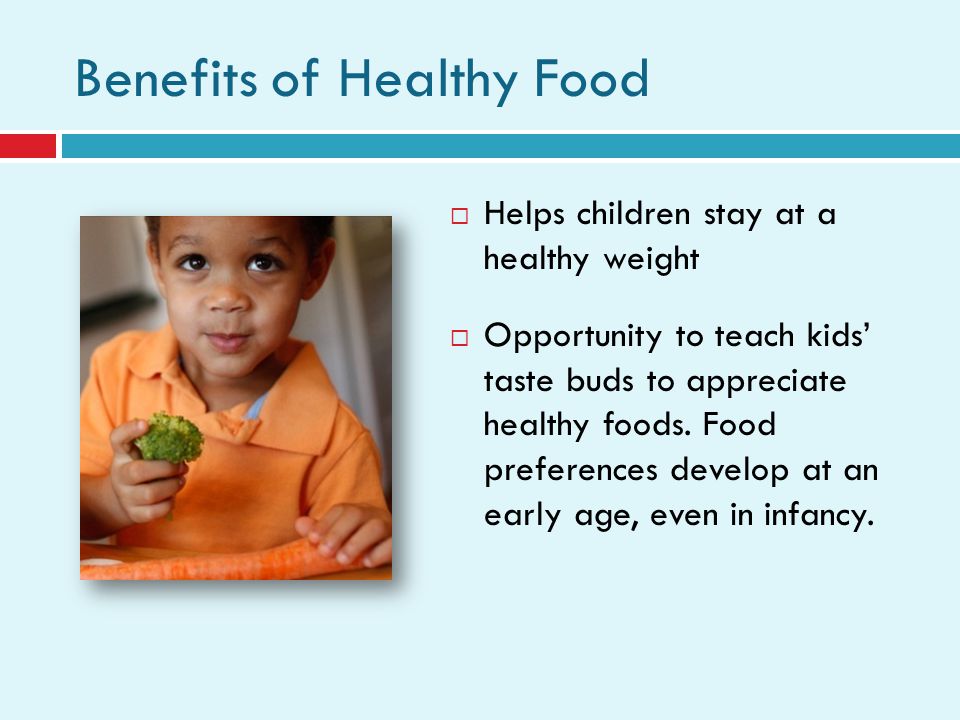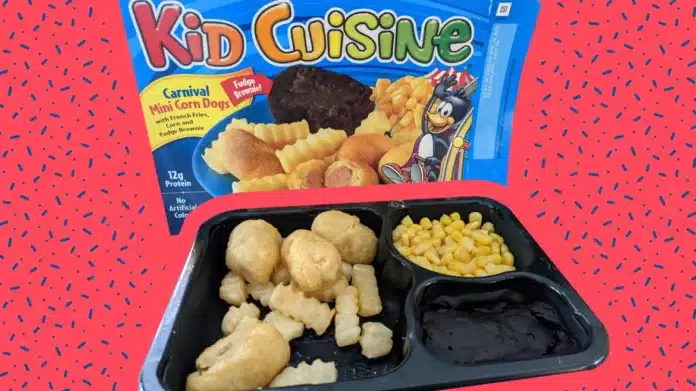In a world of culinary delights, there’s a realm specially designed to capture the imaginations and appetites of young ones—a realm known as “Kid Cuisine.” This playful and flavorful culinary experience is tailored to cater to the tastes and preferences of children, offering a delightful array of dishes that bring joy to the palate.

From whimsical shapes to vibrant colours, Kid Cuisine transforms mealtime into an adventure where food becomes a source of delight and exploration for the little ones. In this article, we delve into the world of Kid Cuisine, exploring its origins, diverse offerings, and the magical way it turns dining into a delightful journey for kids and parents alike.
Read Also: 21 Kerala Famous Food
Healthy Meals for Kids
Ensuring that children consume nutritious meals is a priority for parents and caregivers, as these meals play a crucial role in their growth, development, and overall well-being. Providing kids with balanced and wholesome foods supports their physical health and establishes healthy eating habits for life.

Here, we explore a range of creative and delicious healthy meal ideas designed to captivate children’s taste buds while offering essential nutrients to fuel their active lifestyles.
- Rainbow Veggie Wraps: Create colourful wraps using whole-grain tortillas filled with an assortment of sliced vegetables like bell peppers, carrots, cucumbers, and spinach. Add a protein element, such as hummus or lean turkey, to make it a satisfying and nutritious meal.
- Mini Quiches: Bake mini quiches loaded with veggies like broccoli, tomatoes, and spinach. Mix in some low-fat cheese and pour whisked eggs over the top before baking. These mini delights are packed with protein and nutrients.
- Fruit Parfaits: Layer Greek yoghurt with mixed berries and a sprinkle of granola to create a visually appealing and protein-packed parfait. This treat is rich in vitamins, minerals, and probiotics.
- Homemade Pizza: Use whole-wheat English muffins or pita bread as a base for homemade mini pizzas. Top with tomato sauce, low-fat cheese, and an array of colourful veggies like bell peppers, mushrooms, and olives.
- Oatmeal Banana Pancakes: Make pancakes using mashed bananas, oats, and eggs. These pancakes are delicious and provide whole grains and potassium from bananas.
- Veggie-loaded Pasta: Toss whole-grain pasta with a variety of sautéed vegetables like zucchini, cherry tomatoes, and peas. Drizzle with light olive oil and garlic sauce for a wholesome meal.
- Crispy Baked Chicken Tenders: Instead of frying, coat chicken tenders with whole-wheat breadcrumbs and bake until crispy. Serve with a side of baked sweet potato fries and a dipping sauce made from Greek yoghurt and herbs.
- Smoothie Bowls: Blend together frozen fruits, Greek yoghurt, and a splash of milk to create a thick and creamy smoothie. Pour into bowls and top with nuts, seeds, and additional fresh fruits for added texture and nutrients.
- Nut Butter and Banana Sandwich: Spread natural nut butter on whole-grain bread and add slices of banana. This combination provides healthy fats, protein, and potassium.
- Fish Tacos: Serve small pieces of grilled fish in whole-wheat tortillas topped with shredded lettuce, diced tomatoes, and a dollop of Greek yoghurt as a creamy alternative to sour cream.
Healthy meals for kids involve a blend of colour, creativity, and essential nutrients. By offering a variety of options that cater to their taste preferences, parents can inspire a love for nutritious foods that will benefit them for years to come.
Read Also: Tiffin Recipe: Discover the Secrets of Superb Cooking
Importance of Providing Healthy Meals for Kids
Providing healthy meals for kids is not just a matter of satisfying their immediate hunger; it plays a pivotal role in shaping their physical, cognitive, and emotional development. The importance of offering nutritious foods to children goes beyond basic nutrition and extends to their overall well-being and future habits.

Here are a number of genuine reasons why offering healthy meals to kids is of paramount significance:
- Supports Growth and Development: During childhood, rapid growth and development take place. Nutrient-dense foods provide the essential vitamins, minerals, and protein needed for proper bone, muscle, and brain development.
- Builds Strong Immune Systems: A well-balanced diet rich in vitamins, minerals, and antioxidants helps bolster children’s immune systems, making them less susceptible to illnesses and infections.
- Enhances Cognitive Function: Nutrient-rich foods, especially those rich in omega-3 fatty acids, support brain health and cognitive function. These foods contribute to better memory, concentration, and overall mental clarity.
- Establishes Lifelong Habits: Introducing healthy foods early in life helps children develop a taste for nutritious options. This sets the stage for them to carry these habits into adulthood, reducing the risk of chronic diseases later in life.
- Regulates Energy Levels: Nutrient-dense meals provide a steady energy source throughout the day, preventing energy crashes and mood swings resulting from consuming sugary or highly processed foods.
- Promotes Healthy Weight Management: A diet centred around whole foods and appropriate portions helps maintain a healthy weight in children. This reduces the risk of childhood obesity, which can lead to various health complications.
- Prevents Nutrient Deficiencies: A diet rich in fruits, vegetables, whole grains, lean proteins, and dairy products ensures that children receive the necessary nutrients for optimal growth and development.
- Boosts Self-esteem: Offering nutritious meals demonstrates that caregivers prioritize the child’s well-being. This positive reinforcement can enhance children’s self-esteem and confidence.
- Teaches Good Food Choices: Exposure to a variety of healthy foods educates children about different food groups and helps them make informed choices about what they eat.
- Fosters Family Bonding: Preparing and enjoying meals together as a family promotes bonding and communication. It also provides an opportunity to model healthy eating habits.
- Reduces the Risk of Chronic Diseases: A diet rich in fruits, vegetables, whole grains, and lean proteins can help prevent conditions like heart disease, diabetes, and hypertension in the long run.
- Encourages Experimentation: Offering a diverse range of foods encourages children to explore new flavours, textures, and cuisines, broadening their palate and food preferences.
Providing healthy meals for kids isn’t just about feeding their bodies; it’s about nurturing their potential, well-being, and long-term health. By offering nutritious foods during their formative years, caregivers play a pivotal role in setting the stage for children’s healthier, happier, and more fulfilling lives.
See Also: 4 Food Synergy Ideas That Promote Health
The key Nutrients Essential for Children’s Growth and Development
Ensuring children’s optimal growth and development requires providing them with a diet rich in essential nutrients. These nutrients play crucial roles in various physiological processes, from building strong bones to supporting cognitive function. Here are some key nutrients that are essential for children’s growth and development:
- Protein: Protein is vital for building and repairing tissues, supporting the immune system, and producing enzymes and hormones. It’s especially important during periods of rapid growth. Sources of protein include lean meats, poultry, fish, dairy products, eggs, legumes, and nuts.
- Calcium: Calcium is essential for building strong bones and teeth. It also plays a role in muscle function and nerve transmission. Good sources of calcium include dairy products (milk, cheese, yoghurt), fortified plant-based milk, leafy greens, and fortified foods.
- Iron: Iron is necessary for healthy blood development and oxygen transport. Iron deficiency can lead to anaemia, which can impact growth and cognitive function. Iron-rich foods include lean meats, poultry, fish, beans, lentils, fortified cereals, and dark leafy greens.
- Vitamin D: Vitamin D is crucial for calcium absorption, bone health, and immune system function. It’s often referred to as the “sunshine vitamin” because our bodies produce it when exposed to sunlight. Dietary sources include fatty fish (salmon, mackerel), fortified dairy products, and fortified plant-based milk.
- Vitamin A: Vitamin A supports vision, immune function, and skin health. It’s found in orange and yellow fruits and vegetables (carrots and sweet potatoes), leafy greens, and dairy products.
- Vitamin C: Vitamin C is important for wound healing, collagen formation, and boosting the immune system. Citrus fruits (oranges, strawberries), bell peppers, broccoli, and tomatoes are excellent sources.
- B Vitamins: B vitamins (such as B6, B12, and folate) play roles in energy metabolism, brain function, and red blood cell formation. They’re found in whole grains, lean meats, poultry, fish, eggs, dairy products, legumes, and leafy greens.
- Omega-3 Fatty Acids: Omega-3 fatty acids, particularly DHA and EPA, are crucial for brain development and cognitive function. Fatty fish (salmon, trout), flaxseeds, chia seeds, and walnuts are sources of omega-3s.
- Fibre: Fiber supports digestion, helps regulate blood sugar levels, and promotes a healthy gut. Whole grains, fruits, vegetables, legumes, and nuts are sources of dietary fibre.
- Zinc: Zinc is essential for growth, immune function, and wound healing. It’s found in lean meats, poultry, seafood, dairy products, legumes, and whole grains.
- Magnesium: Magnesium is important for bone health, muscle function, and nerve transmission. Nuts, seeds, whole grains, leafy greens, and dairy products provide magnesium.
- Iodine: Iodine is necessary for proper thyroid function and cognitive development. Iodized salt, dairy products, seafood, and seaweed are sources of iodine.
Providing a diverse and balanced diet that includes a variety of nutrient-rich foods ensures that children receive the essential nutrients they need for optimal growth, development, and overall well-being.

See Also: 20 Healthy Smoothie Recipes for a Delicious and Energizing Breakfast”
Kid Cuisine Recipe
Here’s a simple and nutritious recipe for kid-friendly cuisine:
Rainbow Veggie Wraps
Ingredients:
- Whole wheat or spinach tortillas
- Hummus or cream cheese
- Colourful vegetables (carrots, bell peppers, cucumber, cherry tomatoes, etc.)
- Baby spinach or lettuce leaves
- Grated cheese (optional)
- Sliced turkey or chicken (optional)
Instructions:
- Wash and prepare the vegetables. Cut them into thin strips or bite-sized pieces.
- Lay out a tortilla and spread a layer of hummus or cream cheese over it.
- Place a handful of baby spinach, or lettuce leaves on top of the spread.
- Arrange the colourful vegetable strips on one half of the tortilla.
- Add a layer of sliced turkey or chicken on top of the vegetables.
- Sprinkle some grated cheese over the fillings.
- Carefully roll up the tortilla, starting from the side with the fillings. Roll it tightly to keep everything in place.
- Use a sharp knife to cut the rolled tortilla into smaller sections, creating bite-sized wraps.
Serve these colourful veggie wraps as a delicious and nutritious kid-friendly meal. The combination of flavours, textures, and colours will appeal to children’s taste buds and provide them with essential nutrients for their growth and development. You can customize the ingredients based on your child’s preferences and dietary needs. Enjoy!
Read Also: What is Pepperoni Made of?
Tips for Planning and Preparing Healthy Meals for Kids
Planning and preparing healthy meals for kids can be a rewarding and enjoyable experience. Here are some tips to help you make nutritious and delicious meals that your kids will love:
- Plan Ahead: Take some time each week to plan out your meals and snacks. This will help you avoid last-minute unhealthy choices.
- Include a Variety of Foods: Aim to include a variety of food groups in each meal to ensure your child gets a balanced diet. Include fruits, vegetables, whole grains, lean proteins, and dairy or dairy alternatives.
- Get Creative with Presentation: Make the meal visually appealing by arranging fruits and veggies in fun shapes or colours. Kids are more likely to eat foods that look exciting.
- Involve Kids in Meal Planning: Let your kids help choose meals and snacks. This can give them a sense of ownership and increase their interest in trying new foods.
- Keep Portions Appropriate: Serve age-appropriate portion sizes to prevent overeating. Listen to your child’s hunger cues and avoid forcing them to finish everything on their plate.
- Offer Healthy Snacks: Have a variety of healthy snacks readily available, such as cut-up fruits, yoghurt, whole grain crackers, and nuts. This helps prevent unhealthy snacking.
- Limit Sugary Drinks: Offer water or milk as the main beverages and limit sugary drinks like soda and fruit juices.
- Cook at Home: Cooking at home allows you to control the ingredients and cooking methods, ensuring healthier options.
- Use Whole Grains: Choose whole grains like whole wheat bread, brown rice, and whole grain pasta for added fibre and nutrients.
- Incorporate Protein: Include lean protein sources like poultry, fish, beans, lentils, and tofu to support growth and development.
- Avoid Fried Foods: Opt for baking, grilling, or steaming instead of frying to reduce unhealthy fats.
- Limit Processed Foods: Minimize processed and packaged foods that are often high in salt, sugar, and unhealthy fats.
- Read Labels: When buying packaged foods, read labels to choose options with lower sugar, sodium, and artificial additives.
- Be a Role Model: Children are more likely to eat healthy foods if they see their parents enjoying them too.
- Stay Patient: Children may be hesitant to try new foods at first. Offer new foods alongside familiar ones and be patient as they explore different flavours.
- Include Healthy Fats: Include sources of healthy fats like avocados, nuts, seeds, and olive oil in their diet.
- Make Meals Colorful: A colourful plate is often a nutritious one. Aim for a variety of colours to ensure a diverse range of nutrients.
- Offer Dips: Kids often enjoy dipping their food. Provide healthy dip options like hummus, yoghurt, or guacamole.
- Allow Treats in Moderation: It’s okay to include occasional treats but emphasize the importance of balance and moderation.
Remember, the goal is to create a positive relationship with food and encourage healthy eating habits that will last a lifetime. By making nutritious meals enjoyable and exciting, you can lead your child toward a healthier future.
See Also: List of Easy Recipes for Picky Eaters
Picky Eaters and Challenges
Dealing with picky eaters can be a challenge for many parents, but there are strategies you can use to encourage healthy eating habits and make mealtime more enjoyable:
- Be Patient: Picky eating is common among children, and it’s often a phase that they will outgrow. Avoid pressuring or forcing your child to eat certain foods, as this can create negative associations with mealtime.
- Offer Variety: Introduce a variety of foods from different food groups. Include fruits, vegetables, proteins, whole grains, and dairy or dairy alternatives. The more exposure they have to different foods, the more likely they are to develop a taste for them.
- Get Them Involved: Involve your child in meal planning, grocery shopping, and food preparation. When kids have a role in choosing and preparing their meals, they may be more open to trying new foods.
- Model Healthy Eating: Children often imitate their parents’ eating habits. Show enthusiasm for trying new foods and make healthy choices yourself.
- Make Meals Fun: Create visually appealing and creative meals. Use cookie cutters to make shapes out of fruits and vegetables, or arrange food in a way that’s visually interesting.
- Respect Preferences: While it’s important to encourage trying new foods, also respect your child’s food preferences to some extent. If they consistently dislike a certain food, offer alternatives that provide similar nutrients.
- Offer Small Portions: Start with small portions of new foods. This reduces the pressure on your child and allows them to feel in control.
- Limit Distractions: Avoid distractions like TV or electronic devices during meals. This can help your child focus on the food and their hunger cues.
- Create Positive Associations: Pair new foods with foods your child already enjoys. This can help create positive associations and make trying new foods less intimidating.
- Be Patient with Repeated Exposure: Research shows that it often takes multiple exposures to a new food before a child accepts it. Keep offering new foods without pressure.
- Avoid Using Food as a Reward or Punishment: This can create an unhealthy relationship with food. Instead, praise your child’s efforts to try new foods.
- Offer Consistency: Try to maintain a regular meal and snack schedule. This helps regulate your child’s appetite and prevents excessive hunger that might lead to picky eating.
- Stay Calm: Mealtime battles can be frustrating, but staying calm and patient is essential. Keep mealtime a positive experience.
- Include a Dip: Kids often enjoy dipping their food. Offer healthy dips like yoghurt, hummus, or nut butter to make eating more interactive.
- Be Mindful of Portion Sizes: Don’t overwhelm your child with large portions. Start with small servings and let them ask for more if they’re still hungry.
Remember, every child is different, and it’s normal for them to have preferences. The goal is to create a positive mealtime environment and foster a healthy relationship with food. If you’re concerned about your child’s eating habits or growth, consult with a paediatrician or registered dietitian for guidance.
See Also: Eggy Bread Recipe: 4 Best Recipes to Try Out
Kids’ Healthy Eating Habits
Encouraging healthy eating habits in kids is crucial for their overall well-being and development. Here are some effective strategies to promote healthy eating habits in children:
- Lead by Example: Children are more likely to adopt healthy eating habits when their parents and caregivers make nutritious food choices. Be a positive role model by including various fruits, vegetables, whole grains, and lean proteins in your diet.
- Offer a Variety of Foods: Introduce a wide range of foods from different food groups. This helps children develop a taste for different flavours and textures. Include colourful fruits and vegetables to make meals visually appealing.
- Make Meals Balanced: Ensure meals are balanced with carbohydrates, proteins, and healthy fats. Include whole grains, lean meats, poultry, fish, beans, nuts, seeds, and dairy or dairy alternatives.
- Limit Processed Foods: Minimize the consumption of processed and sugary foods. These foods often lack essential nutrients and can contribute to unhealthy eating habits.
- Encourage Regular Meals and Snacks: Establish a consistent meal schedule with three main meals and a couple of nutritious snacks. This helps regulate hunger and prevents overeating.
- Involve Kids in Meal Planning: Let children be part of the meal planning process. Allow them to choose fruits, vegetables, and other healthy options while grocery shopping. This can increase their interest in trying new foods.
- Cook and Prep Together: Involve children in cooking and food preparation. When they are engaged in making their meals, they are more likely to enjoy the food they’ve helped prepare.
- Create Positive Mealtime Environment: Make mealtimes pleasant and relaxed. Avoid distractions like TV or electronic devices, and encourage conversation and family bonding during meals.
- Offer Healthy Snacks: Keep a variety of nutritious snacks readily available, such as cut fruits, yoghurt, whole-grain crackers, and vegetable sticks. This reduces the temptation to reach for unhealthy snacks.
- Provide Water: Encourage drinking water throughout the day. Limit sugary beverages like soda and fruit juices, which can contribute to excess calories and sugar intake.
- Be Patient with Picky Eating: Picky eating is common among children. Continue offering a variety of foods and avoid pressuring your child to eat. It might take several exposures to a new food before they develop a liking for it.
- Teach Portion Control: Help children understand portion sizes. Use visual cues like using their palm or a small plate to gauge appropriate portions.
- Celebrate Special Occasions: While promoting healthy eating, it’s also important to allow occasional treats during special occasions. Teach moderation and balance.
- Educate About Nutrients: As children grow older, educate them about the importance of different nutrients and how they benefit their bodies.
- Encourage Mindful Eating: Teach kids to eat slowly, savour their food, and pay attention to their hunger and fullness cues.
Remember that developing healthy eating habits is a gradual process. Be patient and consistent in your efforts, and create an environment where nutritious choices are readily available and encouraged.
See Also: 10+ Worst Nigerian Food Combos You Should Definitely Try
Conclusion
Promoting healthy eating habits in children is an investment in their long-term health and well-being. By providing nutritious meals, teaching them about balanced choices, and creating positive mealtime experiences, we lay the foundation for a lifetime of good health.
While it’s natural for kids to have preferences and challenges with certain foods, our guidance and encouragement can shape their attitudes toward eating. As parents, caregivers, and educators, our role in fostering healthy eating habits is essential.
By instilling these habits early on, we empower children to make informed food choices, develop a positive relationship with food, and enjoy the benefits of a nourished and vibrant life.
FAQs for Kid Cuisine
What is the meaning of Kid Cuisine?
Kid Cuisine is an American brand of packaged frozen meals marketed by Conagra Foods, created in 1990. Described as a “frozen food version of a Happy Meal“, the product is marketed towards children while assuring parents of nutritional benefits.
Is Kid Cuisine still a thing?
Yes, it is. Kid Cuisine was once a frozen food staple for many families and children in the United States. Either you ate it religiously, or you saw kids eating it in commercials, wondered what it tasted like, and begged your parents to buy it for you.
How old is Kid Cuisine?
Kid Cuisine is an American brand of packaged frozen meals marketed by Conagra Foods, created in 1990.
How to prepare kids cuisine?
Remove the film cover from the tray. Remove the chicken nuggets and sprinkle the packet.
Microwave meal on high for 1 minute; Stir macaroni & cheese. Replace chicken nuggets. …
Let stand for 2 minutes in the microwave. Carefully remove as the product will be hot; stir macaroni & cheese and pudding.
Why is it called cuisine?
Used in English since the late 18th century, the word cuisine – meaning manner or style of cooking – is borrowed from the French for “style of cooking,” as originally derived from the Latin “Coquere”, meaning “to cook”.
Who is the CEO of Kid Cuisine?
Conagra Foods
Kid Cuisine is an American brand of packaged frozen meals marketed by Conagra Foods, created in 1990. Described as a “frozen food version of a Happy Meal”, the product is marketed towards children while assuring parents of nutritional benefits.





